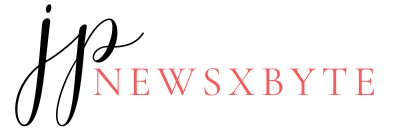Today, Canada heads to the polls in a crucial election that will shape the country’s future, with national security concerns, trade tensions with the United States, and the role of political parties all at the forefront. As voters cast their ballots, the political landscape is witnessing a dramatic shift. At the center of the contest are Prime Minister Mark Carney’s Liberals, led by a former central banker, and Pierre Poilievre’s Conservatives, both vying for control of the country’s government. Meanwhile, Jagmeet Singh’s New Democratic Party (NDP) could once again play the pivotal role of kingmaker, depending on how the election results unfold.
A close race between the Liberals and Conservatives
Recent polling data suggests a tight race between the Liberal Party and the Conservative Party. The Liberals, under the leadership of Mark Carney, currently hold a narrow lead over the Conservatives, led by Pierre Poilievre. According to national polling, Carney’s Liberals have around 42.6% support, while Poilievre’s Conservatives have 39.9%. In this tight contest, the NDP, led by Jagmeet Singh, trails significantly with a distant third place, while the Bloc Quebecois, which operates solely in Quebec, holds fourth.
The competition is especially fierce in key electoral districts—also known as ridings—where the results could dramatically alter the political landscape. With no party expected to win a clear majority, the NDP’s position becomes crucial. In a minority government scenario, the NDP could have the power to influence which party forms the next government, making Singh’s party the potential kingmaker once again.
Jagmeet Singh’s role
Jagmeet Singh finds himself at a significant crossroads in his political career. Having previously supported the Liberal government under Justin Trudeau in exchange for social spending initiatives, Singh and the NDP withdrew their support in September 2024 due to the growing momentum of the Conservative Party. As the votes are being cast, the NDP’s position has weakened, with polls suggesting that Singh’s party could lose official party status if they fall below 12 seats.
Singh, who has built his reputation around championing issues of equity, inclusion, and social justice, now faces an uphill battle to maintain the NDP’s influence in Canadian politics. In his own riding of Burnaby Central, a newly established district in British Columbia, Singh is facing stiff competition, with polls indicating he may be trailing behind the Liberals. This district, which replaced Burnaby South, was once held by Singh, but the shifting dynamics in the region suggest that he might not secure a win this time.
If Singh loses his seat, it would signal a setback for the NDP, which could struggle to maintain its relevance in Canadian politics in the years to come.
Trump’s influence: National security and economic concerns
The campaign has been deeply influenced by the rhetoric of US President Donald Trump, particularly his trade tariffs and controversial remarks about Canada. Trump’s threats have sparked heightened national security concerns and driven a wave of patriotism across Canada, leading many Canadians to rally behind Mark Carney’s Liberal Party. As a former central banker with vast international experience, Carney has positioned himself as the steady leader who can protect Canada’s sovereignty in the face of foreign pressures.
This shift in public sentiment, driven by Trump’s actions, has contributed to the Liberals’ narrow lead in national polls. Canadians are prioritizing national security and the defense of Canadian sovereignty, making the Liberals the preferred choice for many voters concerned about Trump’s aggressive rhetoric.
What happens if no party wins a majority?
Canada’s parliamentary system is designed to handle minority governments, where no single party holds a majority of the 338 seats in the House of Commons. In such cases, the governing party must seek support from other parties to pass legislation, often leading to informal agreements or coalitions. If the government loses a vote of confidence, it could be forced to resign, triggering another election.
Should the election result in a minority government, Singh’s NDP could once again play a key role in determining the fate of the next government. Depending on the seat count, the NDP could choose to support either the Liberals or the Conservatives, or even withhold support, leading to a potential deadlock in the legislature. In this scenario, the NDP’s influence could be decisive in shaping the direction of Canadian policy.
Singh has already stated that he would not form a coalition government with the Liberals if no party wins a clear majority. His focus, according to the NDP leader, remains on pushing for NDP priorities, such as debt forgiveness for students, lowering prescription drug costs, and addressing climate change, rather than sharing power with the Liberals. This position could limit the NDP’s bargaining power in post-election negotiations, but it also solidifies Singh’s commitment to his party’s values.
NDP’s future and challenges
The future of the NDP rests on its ability to maintain party status, secure a sufficient number of seats, and impact legislative outcomes. Should the NDP fail to secure a significant number of seats, the party may struggle to maintain its relevance in Canadian politics. However, if the party remains influential and secures enough seats, Singh could play a pivotal role in determining which party will govern and which policies will be pursued.
In the event of a minority government, the NDP’s leverage would be determined by how many seats they hold and whether they can strike strategic deals with either the Liberals or the Conservatives. This could include supporting specific policies or pushing for legislative concessions in exchange for their backing.

